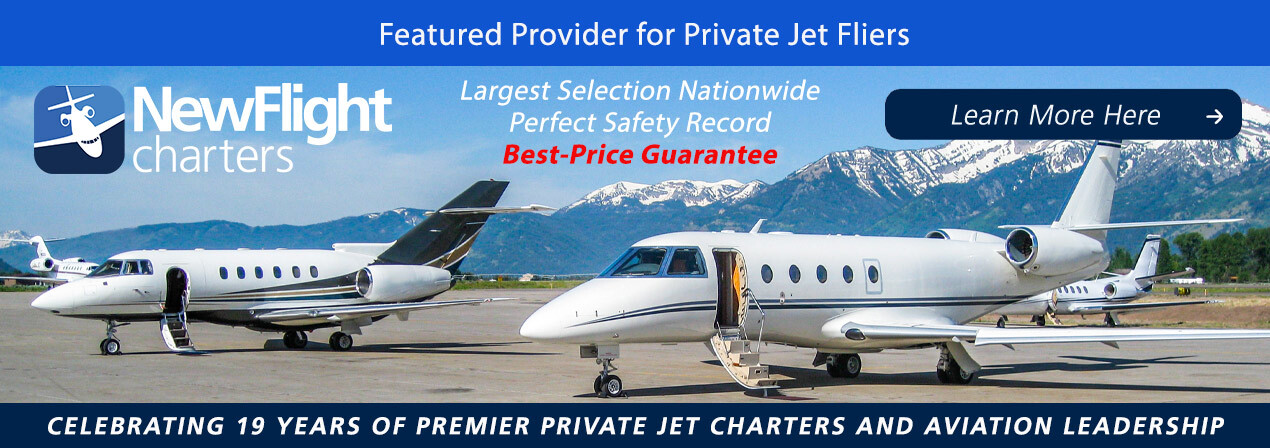Editor’s note: Forbes.com contributor Doug Gollan has undertaken an analysis of jet card companies for his new business providing a paid analysis of jet card programs.
The first installment was a comparison of 18 jet card companies and programs.
The second installment takes a look at private jet cards, vs. charter, and includes comments and feedback sent in from charter and card jet card company executives:
 There are quite a few aspects of buying private jet travel that makes it a very personal decision. In terms of buying private jet cards, there are variances in pricing, fees, daily minimums, the amount of insurance provided, how much you have to pay upfront, policies on taking your pets or sending your kids unaccompanied. There are differences in what type of catering is provided without charge, how many hours in advance you have to make your reservation as well as cancel and much more. Some programs guarantee WiFi. Others don’t. Some require the bulk of your money in advance. Others have an initiation fee and you pay as you go.
There are quite a few aspects of buying private jet travel that makes it a very personal decision. In terms of buying private jet cards, there are variances in pricing, fees, daily minimums, the amount of insurance provided, how much you have to pay upfront, policies on taking your pets or sending your kids unaccompanied. There are differences in what type of catering is provided without charge, how many hours in advance you have to make your reservation as well as cancel and much more. Some programs guarantee WiFi. Others don’t. Some require the bulk of your money in advance. Others have an initiation fee and you pay as you go.
I know many of you are time poor and want to get things like choosing a private aviation provider done with so you can move on to more pressing matters. In fact, it is so complicated as I was gathering information for this series, there was so much I put it all together in a website PrivateJetCardComparisons.com which I created and own.
Air Charter Alerts by FlightList PRO, are the latest announcements in the private air charter industry about operators, brokers and charter aircraft, and geared towards active participants in the industry. More information here- FlightList PRO and About Us.
A few days ago, I published Part 1 of the series on buying prepaid private jet travel titled, “Before You Buy A Private Jet Card Read This.” This series is based on my research, and the fact that there are so many variances between programs (I found over 60 in the 75 programs I analyzed), it got so unwieldy I put them into spreadsheets and eventually the above-mentioned website, because truth be told, even covering the various differences in this series of articles isn’t as easy as looking at spreadsheets.
After Part 1, I got a letter from a Forbes.com reader, which is below in its entirety.
“One thing I do not see addressed (although possibly you had planned on doing so in future installments) is the fact that most Jet Card programs have an hourly cost far, far higher than the hourly rates a local charter operator would charge for the same class of aircraft.”
“In addition, I would never tie up $100,000 to $150,000 or more in ‘prepaid’ travel; there’s an opportunity cost involved. I could be making more money actively investing those funds, rather than letting the Jet Card company make money off my prepaid funds. In my humble opinion, Jet Cards are a ripoff for the uninformed.”
Having done considerable research on the subject and also having written about the on-demand market, I see them as chalk and cheese. On-demand is probably the right solution for the person who charters planes infrequently, maybe a couple times a year, and does same day trips starting and ending in the same place (where you don’t have to pay for repositioning flights). It also works better if you have a broker you trust to source the type of planes you are comfortable flying on. You can get a better rate chartering a 30-year old plane than a three-year-old aircraft for sure. There are a number of other issues too, so I thought I would go back to several executives at companies that sell jet cards and in some cases also offer on-demand charter and put the above question to them. Answers have been edited for length and clarity.
Michael Farley, the CMO at Private Jet Services Group (PJS) wrote back to me with his answer below:
“Local operators can present savings from time to time. However, the reader better have efficient flying, meaning not one-way travel (or he will have to pay for the return flight to the base), not for a prolonged period of time (there are overnight fees or the customer pays to position the aircraft twice if trips are longer than a day or two), and of course, this is all based on the local operator having availability. They might have one or two aircraft (but) everyone wants to fly on President’s Weekend. Actually, everyone likes to fly on most weekends!
“If the client has flexibility in their schedule and can wait for availability, perhaps the limited fleet will not be an issue. Ninety-nine percent of my clients do not have that type of flexibility. I should also touch on mechanicals. A local operator is much more likely to leave you out of luck when experiencing mechanicals. PJS provides equal or better with guaranteed recovery. Our national average (for recovery) is 1.5 hours.
“I always recommend my clients blend their aviation solutions. I provide cost analysis often for our clients. After analyzing much of their flying, they often realize the cost comes out equal. They just haven’t been flying with any guarantees of a national program.”
Another executive from a jet card provider who didn’t want to be named responded this way:
“Our jet card comes with $100 million in liability insurance, a certified network that is pre-screened with serious data sharing, a series of guarantees with the product, positioning costs baked in, 100% transparent rates, 24/7 Command Center, Chief Safety Officer, Peak Day availability, guaranteed interchange between sizes, customized client treatment programs, and then a series of ancillary benefits. And that’s just off the top of my head.”
Jamie Walker, CEO of Jet Linx, which only sells jet cards as a consumer product to access its fleet responded this way:
“Your reader is correct with his perspective of the cost for roundtrip flights, but not one-way flights. A local charter operator can provide a lower hourly rate, in most cases, for a roundtrip, but not for one-way flights. That said, the local charter operator is not guaranteeing the consumer availability of an aircraft at those lower hourly rates. The local charter operator is also not guaranteeing a standard of safety by an outside third party. So if the consumer does not require one-way rates or guaranteed availability and safety, the local charter operator may be a good option for them. As for the deposit, we agree, we’d rather them keep their money and invest it elsewhere too, which is why we don’t collect a deposit upfront, our clients pay as they go for the guaranteed jet card services we provide.”
JetSuite founder and CEO Alex Wilcox also responded to my email with the reader’s comments:
“Comparing quoted hourly rates with jet card rates is often apples and oranges. A local operator with a charter plane may have a low rate of say $3,000 per hour, but not disclosed is the three-hour minimum, the requirement to get the plane back to the base, and the cost plus a mark-up for services like deicing. So the Orange County to Mammoth flight, the local operator rate is $3,000 per hour but with a three-hour minimum, so really $9,000. The comparable jet card might charge $5,000 per hour, but that’s it. If you have to de-ice, the local FBO adds that on to your bill, maybe another $800, plus their markup. Now you used local but paid twice as much, despite the $3,000 rate.
“If it’s a same-day trip or overnight round trip, then the local charter operator may be cheaper. It would be $9,000 with the charter operator versus $10,000 with the card. Then the hygienic questions come into play: Who owns the plane? How much is the insurance coverage? Do the pilots really abide by duty time rules? Who maintains the plane? Who trained and employs the pilots?
“Jet cards come with a level of diligence and hygiene absent in many mom and pops. It’s not like Uber where we all can recognize an unsafe car or driver and get out. When you take off in a 1979 Lear 25 with an 80-year old captain and a First Officer not type rated in the jet, ‘You pays your money and you takes your chances.’”
A former boss of mine was an owner with NetJets, and certainly, if you want to compare prices, NetJets is not the cheapest. On the other hand, if you visit their Columbus operations center it’s very impressive. I always remember the salesperson telling my chairman, “You’re flying on the same planes that Warren Buffett flies on.” The comment was not about potentially sitting in the same seat as the Oracle of Omaha, but that when you flew with NetJets you could be assured they took safety seriously.
My guess is this is an emotional topic, so I certainly welcome responses. Forbes.com makes it very easy for your to comment at the end of the article, and I will definitely respond!
Author’s Note – After I posted this story, Ronald Silverman, president of VistaJet USA sent me his response, which I am adding below:
“While VistaJet is not considered a jet card (they do sell prepaid block hour programs), in our business model, the higher hourly cost versus charter is associated with the fact that VistaJet provides guaranteed availability of a consistent product. Further, VistaJet owns the asset and thus the end user does not risk having their scheduled aircraft pulled from them at the last minute because the aircraft owner (typically an aircraft owned by a private UHNW or a corporation) requires the use of the aircraft for themselves, a scenario which I have personally been involved with on numerous occasions.”
Author’s Note – David Sneed, COO of Delta Private Jets also followed up with his take on the question. He also noted that his card members get perks from Delta Air Likes, like Diamond Medallion status, complimentary SkyClub access and discounts when flying on certain fares from its parent airline:
“Analyzing ad hoc charter pricing versus jet card pricing results in an apples to oranges comparison. This is because guaranteed availability and other benefits provided by a jet card are not available in the charter market. Delta Private Jets offers a jet card with guaranteed availability with as little as 10 hours notice and simple, all-in pricing locked in for up to two years, including landing fees, crew overnight expenses, fuel surcharges, deicing costs, and other fees common in the charter market.”
From Forbes.com article by Doug Gollan
The FlightList PRO multi-search platform which includes all 16,631 charter aircraft and 3,419 charter operators worldwide. FlightList PRO is used by the most successful and experienced brokers and travel professionals in the industry; 80% of those using FlightList PRO have been arranging charters more than 10 years.
Air Charter Alerts by FlightList PRO, are the latest announcements in the private air charter industry about operators, brokers and charter aircraft, and geared towards active participants in the industry.

